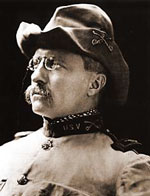Last week, we aired the ranting of a former Greenpeace USA staffer about the current state of the organization in the wake of the recent decision by the board of directors to resign en masse.
This week, we offer a forum to Craig Culp, director of media affairs at Greenpeace, who, shall we say, was less than thrilled at the anonymous flame from the former staffer.

Culp said the board simply came to a point where its disagreements over the future role of the direct action organization were hindering progress. “Boards aren’t supposed to do that,” Culp said. “They are supposed to advance the organization, grease the tracks for it to move forward.”
Culp denied that current Executive Director Kristen Engberg issued an ultimatum (as our source suggested) that either the board went or she would quit. Our source contended that Engberg used as a weapon the threat of Greenpeace International withdrawing rights to its name to Greenpeace USA. Not so, said Culp: “As far as Greenpeace International trying to exert pressure on Greenpeace USA, it’s just not there. Kristen is a remarkable manager and leader. She has a vision all her own and she fights for it.”
And the top-level staff hemorrhages that our source spoke of? “I don’t see it. I see top-level management holes being filled with great people. Thirty people have been brought in in two years and that’s pretty substantial. If there was a hemorrhage it was two years ago. … Lou Gerstner fired 150,000 people at IBM, that’s a hemorrhage.”
Finally, Culp disputed that the current morale level at Greenpeace USA was at all low. “Kristen came in at a critical juncture in the organization’s history. … She came in as the canvas was dissolved, during a huge cultural shift, during a critical time in terms of finances. … We now have a balanced budget for the first time in five years. We’ve hired 30 new people. We have new campaign issues.”
Culp cited several recent campaigns as evidence that Greenpeace USA is in fact making a comeback. Among them: recent announcements by Gerber and Heinz that they would not use genetically modified organisms in their baby food, Mattel’s announcement that it would strive to replace polyvinyl chlorides with plant-based materials in its plastic toys, and Ikea’s and Home Depot’s decisions not to buy wood from old-growth forests.
As always, we’d be happy to keep this debate going if anybody else out there with knowledge of the situation would care to join the fray.
From the “All Politics Is Local” File
Don’t look for this to become a big issue on the presidential campaign trail this winter, but Sen. John McCain (R-Ariz.) made some noise last week when Pres. Clinton indicated he would heed Interior Secretary Bruce Babbitt’s request to create three new national monuments in the West and expand the Pinnacles National Monument south of San Jose, Calif., by nearly half its current size.
McCain’s pique is not particularly surprising: Two of the three new monuments would be in his home state of Arizona. One would include about 1 million acres near the Grand Canyon’s north rim, the other approximately 70,000 acres of desert just north of Phoenix.
McCain wasted little time accusing Babbitt and the president of riding roughshod over Congress to swipe lands that could otherwise be used by local businesses and developers.

Teddy Roosevelt, appearing smaller than life.
McCain: “[Babbitt’s] recent statement indicates that he is deliberately taking into his own hands a decision that should be made by the state and the Congress, with support of the Arizona people.”
Of course, McCain’s argument is undercut somewhat by the fact that the Pinnacles Monument, which Clinton would expand to protect watershed and wildlife habitat, was originally created by Pres. Theodore Roosevelt, a man McCain cited in a recent debate as a hero and an inspiration, particularly for his work on creating national parks.
From the Dec. 13 debate:
My modern-day role model and hero is Theodore Roosevelt. Theodore Roosevelt was larger than life. Theodore Roosevelt believed in reform. He took the politics of America out of the hands of the robber barons, and gave it back to the people. He put the United States of America on the world’s stage, in the international arena, which made way for our ever-expanding role in the world.
He established our national parks system. He was an activist. He was a reformer. And he was a man of great vision.
Theodore Roosevelt, I think, is a modern-day role model for me, and many other people who hold dear conservative principles, and yet believe there’s a role for government in our society.
Apparently, for McCain, that role no longer includes protecting certain lands by presidential fiat. So much for reformer activists like Roosevelt.
Email Activism
Last week, four environmentalists supporting Vice Pres. Al Gore’s presidential campaign emailed a letter to campaign supporters touting the VP’s green bona fides and urging the recipients to forward the letter to 10 friends. The four — attorney Robert F. Kennedy Jr., former Council on Environmental Quality Chair Katie McGinty, T.V. anchor Pat Bryant, and actor Ted Danson — also included a link to a section of Gore’s website where recipients of the message can sign on as “Environmental Voters for Gore.” We’ll check with the campaign later to see how many people actually sign up.
Al Gore Mad Inventor’s Club
Before we sign off for a brief winter’s respite, we share this entry into our contest which challenged readers to suggest things for which Gore should take credit before it’s too late.
This from Kent Yamaguchi: “Didn’t Al invent Gas-X? I know it was something to do with the reduction of toxic gases.”


